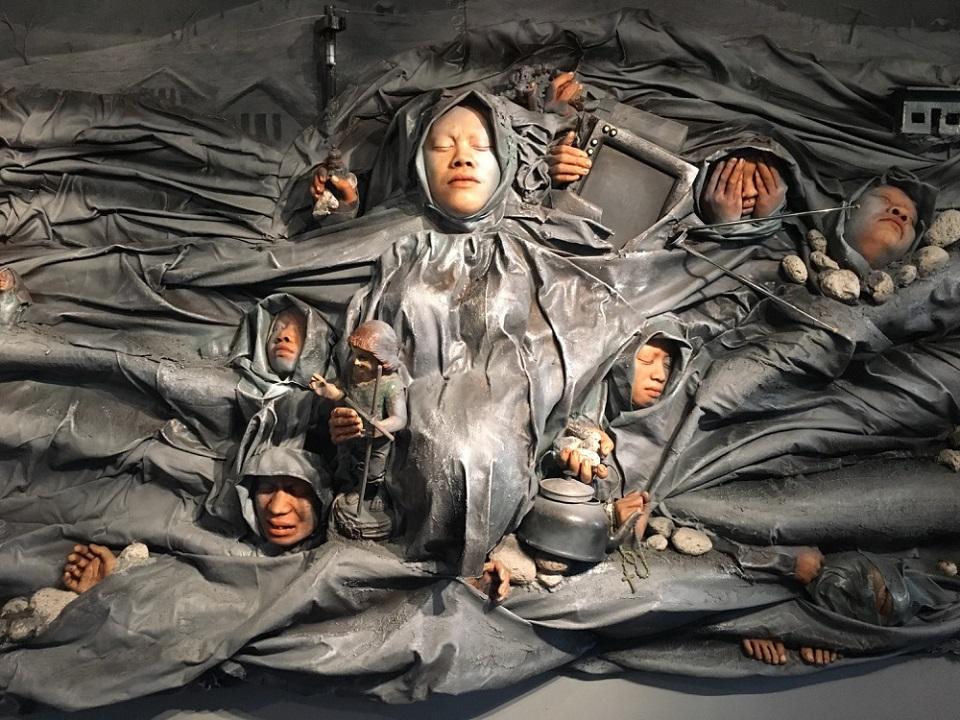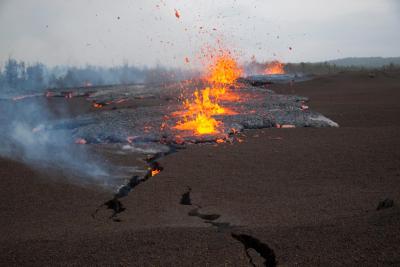By Isabelle Covert
Morrison’s depictions of the struggle within individuality and solving problems in a collaborative, community-based manner shows us, as readers and as people, the importance of individualism, community, and collaboration in all that we do. Over-individuality and individualism, as it’s used here, is the belief that what one can do with others, one can do better themselves. In this, individuality can mean the presence of a strong self that can exist without others, but that can also be called simply a strong sense of self. The self is an important part of any person and it is just as damaging to attach one’s selfhood to others as it is to believe that selfhood means not relying on anyone else. Therefore, positive collaboration and community is one where each person still has a stand-alone self, with personal beliefs, ideas, and opinions, but that they understand that most often a collaborative community can be better for everyone involved than over-individuality. It is dangerous to go too deep into collaboration – and lose yourself – but it’s also dangerous to not submit to collaboration at all – and lose your community. Throughout her Beloved trilogy, Morrison’s characters give a realistic depiction of what it’s like to go through trauma, grow, and heal from an excess and/or lack of community and individuality. Morrison’s focus on love, in this context, is very interesting in that she tends to focus on the effects of an excess of love of various types, which can often lead to excess or lack of collaboration or individuality.
In Beloved, we see Sethe lose her community after news gets out of what she did and tried to do to her children. This leads to a tough, bitter existence for Sethe and Denver, especially after Baby Suggs dies and Howard and Bugler leave. When Paul D shows up and they go to the carnival, there seems to be hope that maybe they can gain their community back while still being individuals, but then Beloved shows up. Beloved’s very existence seemed to be an extension of Sethe’s (or vice versa) and allowed no self at all in the house, an example of collaboration to the extreme – dissolution of the self and reliance on others for any semblance of that. This leads to the ruin of Paul D and Sethe’s relationship and almost killing Sethe in the process. This is an example of when collaboration goes too far – so far as it could be called the dissolution of the self in both Sethe and Beloved. This situation continues getting worse until Denver decided to get her selfhood back from Beloved and go searching in the community for a job, food, and help. The scene where Beloved disappears is most important in that it brings the community together for a common cause: to help out one of their own. “Sethe is running away from her, running, and she feels the emptiness in the hand Sethe had been holding. Now she is running into the faces of the people out there, joining them and leaving Beloved behind…. Then Denver, running too. Away from her to the pile of people out there.” Beloved represents collaboration to the most extreme, to the loss of self and the becoming of something else entirely, Denver represents community and collaboration within that, in the perfect amount to be able to strengthen and protect one another, and Sethe herself represents individuality maybe not to the extreme, but in such a way that she thought she couldn’t or maybe just wouldn’t reach out for help when she needed it.
In Jazz, we see the same spectrum of individuality to collaboration, but in a much different way. Violet lost herself in Joe, and Joe shut himself in until he met Dorcas. At the other end of the spectrum, Joe hides within himself and refuses to get attached or identified with another person. Violet seems to be unable to be an individual for most of the book – she defines herself by her husband, her parrot, and longs to be able to be defined by a child, going so far as to almost steal a baby. She trained her parrot to tell her he loved her, because she thought she wouldn’t be able to go on in a world where she wasn’t loved. Consistently until after Dorcas’s death, she refuses to be an individual and instead longs to be part of someone else. Violet reaching out to Alice after she tried to mutilate the face of Dorcas’s corpse at her funeral, without the intention of apologizing, was Violet’s first attempt at community at a nearly-healthy level that we see in Jazz. Joe, on the other hand, longs to be free, like the woman he thinks his mother is. Growing up and not knowing his mother and hearing rumors that he was born from the woman people called ‘Wild’ because of where and how she lived, he learned that he couldn’t get used to be identified by anyone else, and was so insistent upon this that he basically closed himself off to connection until he met Dorcas, to whom he (almost immediately) became overly attached. Dorcas was open to collaboration and knew herself individually as well – she was able to navigate this spectrum well, and because she collaborated so closely with those who weren’t able to maintain their individuality versus collaboration, she was punished for it. Therefore, it’s not just the level of collaboration that matters, but who you collaborate with.
In Paradise, we see a community held together by history and just for the sake of having a community. However, this community is lacking in collaboration and individuality. People identify themselves by their families, their ancestors, and their age more than by their actual opinions, ideas, or beliefs. There are the 8-rock families, and those who have been discarded for marrying undesirables. There are the men, and the women. They identify very strongly with these groups, but not for any real reason other than that’s the way it’s always been done. The community of Ruby is leaning heavily toward unhealthy levels of collaboration, but they are also so proud of their arbitrary identities that they think they’re the best and can receive no criticism, so they are also unhealthily individual. The women of the convent, on the other hand, initially lean so far into individuality that it’s hard to think they are even a community. Each of the women, taking her own hard path, end up at the Convent and resist the influence of the others, of the town, and of the rest of the world. However, as we can see as we get closer to the end of the story of the Convent, the women collaborate on their individuality and make an unhealthily attached community of over-individualistic people. This can be seen in K.D. Morgan, who has an affair with Gigi, one of the girls from the convent, despite the community’s expectations, but then still goes with the other Ruby men to attack and kill the convent women. The rituals or ceremonies the women participated in celebrated their over-individuality, but also dissolved them into a single consciousness. Thus, one person can be both overly individualistic and overly attached so much that your selfhood dissolves.
The things each book in the trilogy can teach us about collaboration and individualism are very important to keep in mind as we move forward in our lives, deciding who we’re going to be and how we’re going to live. Beloved teaches us that too much of a good thing is most definitely a bad thing – where both basic collaboration and community and a strong sense of self are good things, but in excess can be so damaging. Jazz shows us that the people we collaborate with or choose to be individual around can be just as important as making that decision as to the amount of individualism or collaboration to bring into our lives, because the effect that other people and their lives can have on ours is huge and sometimes pretty hard to spot until it’s too late, like poor Dorcas learned. Paradise shows us that not only can you be in excess of one or the other, individualism or collaboration, but you can have an excess of both at any point in time. This trilogy teaches about the dangers of love, but also the necessity of it, which is the same as how it is for both collaboration and individualism.
As we move on toward the end of college, we have to make decisions about what kind of life we want to live and how we’re going to achieve the life we want. I am the type of person that tends to value community and friendship and love over individualism and alone time and caring for myself. This has been cultivated by growing up in a large family, as the oldest sibling, I rarely got any time to myself but I learned to cherish it, and then I came to college where, between roommates, housemates, and classmates, it’s very easy to not have to be alone in spirit or physically. However, as I move into my senior year and have to begin to think about what happens after, I find myself terrified of not having this community that I’ve grown to love. Now at this point, I usually find myself trying to find solutions to that, ways that I can avoid being alone, but sometimes (I’ll admit, not very often) I find myself thinking about how I can grow as a person and learn to be okay by myself. I know it feels like an uphill battle right now, but I know that it’s so important for my own growth and healing to leave my comfort zone and do something different. And the way that Morrison’s characters have to go through the same kind of discomfort, and then they make it through at the conclusion of the novel – not to perfection, but to a place of solid growth and continued healing – it gives me hope and confidence that I can do the same. I want my life to be one where I have a community, but I don’t rely on them to the point where if I’m without it, I am stuck. As my friends look at graduate schools all over the country, and I look at possible jobs and master’s programs online so I can go back home, it’s easy to feel discouraged and premeditate that loneliness that I expect. However, with just a bit of positivity and effort, I am able to feel comforted in that I love what I’m going to be doing, I’ll be close to family, and I can finish figuring out the life I want to live. I will be able to find that balance between individualism and collaboration.



